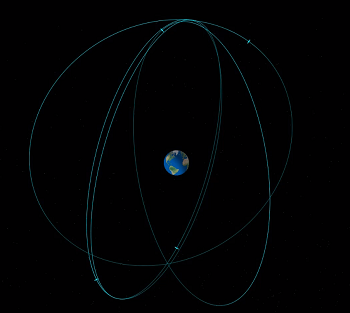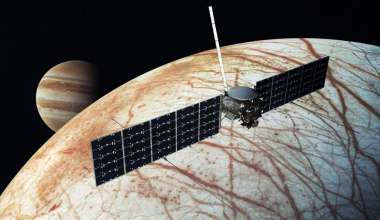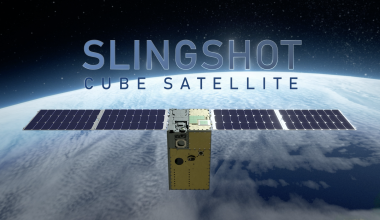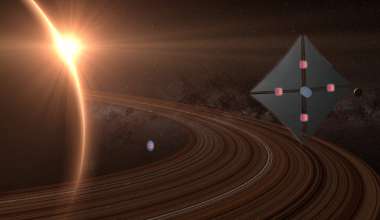Designing a system of satellites is a mind-bogglingly complex game of tradeoffs. Mission planners must weigh objectives such as lifespan and coverage against constraints like cost and scheduling, all while contending with the physics of space. Add ever-changing threats and orbital congestion to the equation and the problem can become difficult beyond human comprehension.
The key to unraveling this complexity lies in a phenomenon observed by Charles Darwin in the Galapagos Islands nearly 200 years ago; species evolve by mastering multiple objectives: fending off predators, accessing food and withstanding harsh climates, to name a few. Over millions of years, natural selection determines the best combinations of genes for species to survive.

Evolutionary computation borrows from this process to find optimal solutions to problems with many objectives, such as the configuration of a satellite constellation. Though evolutionary algorithms have been applied to fields ranging from forestry to energy, The Aerospace Corporation is pioneering their use for designing more effective space systems for the future.
Over the course of nearly two decades, Aerospace’s work has shaped a key government satellite architecture, giving mission planners the tools to evaluate numerous competing factors in constellation design. The possibilities can become intractable without a method to reconcile a mission’s priorities, such as cost and capabilities, with the dynamics of Earth’s orbit.
“There are hundreds of trillions of designs you could envision,” said Dr. Lake Singh, a Systems Director at Aerospace. “You need an efficient way to search through those, and evolutionary algorithms provide the means for a guided search.”
Beginning as a small group in the early 2000s, the team developed industry-leading expertise in evolutionary computation through collaboration with university researchers in civil engineering studying similar multi-objective problems.
“It’s a mutually beneficial relationship,” said Dr. Matthew Ferringer, an Associate General Manager at Aerospace and who has spearheaded the effort. “The corporate university partnership program gave us seed money to invest in student projects, which paid dividends for research and code sharing.”

Ferringer’s doctoral advisor from Cornell University has been a key collaborator, along with another of his former students, now a professor at the University of California, Davis.
The academic connection helped the team gain access to a supercomputer at the University of Illinois, enabling them to test their theories and apply the findings to ongoing constellation design work.
“The value of these collaborations is our exposure to ways of thinking outside of the space field,” Singh said. “Indirectly, everything we learn gets folded into the work we do for our customers.”
What started as Ferringer’s graduate school research has grown to become full corporate capability with a department of engineers and a seat at the table as a trusted advisor to a national satellite program.
“Aerospace is a special kind of place that gives the staff the flexibility to be very creative,” said Ferringer. “We have over 12 patents associated with the process, but patents are as good as firewood if you don't have something tangible to make an impact with. The currency with our customers is the impact we have on their missions.”
Recently, the team earned top honors in the 2020 Humie Awards, which recognize advances in genetic and evolutionary computation that yield human-competitive results. The team’s winning algorithm reduces the cost of near-global satellite coverage, which could make space-based services more economically viable for emerging nations. Their findings were published earlier this year in the Nature family of journals.
Evolutionary algorithms can search for optimal solutions beyond the realm of human cognition using the same principle that Darwin recorded in the Galapagos.
“Nature is an optimal system, and evolutionary algorithms harness that,” Ferringer said. “In our model, decision variables for satellite systems are chromosomes. Those decisions are mated together as constellations and evaluated based on our mission objectives. Did the child survive or die? Over time, you converge on optimality.”
The goal is not to arrive at a single solution, but to arm government decisionmakers with the full set of optimal tradeoffs and enable resilient planning in the face of an uncertain future.
“We need to outpace emerging threats, but what's the best way to do that? How can you get the most bang for your buck?” Singh said. “Having flexibility to adapt to the tradespace gives you the advantage.”









